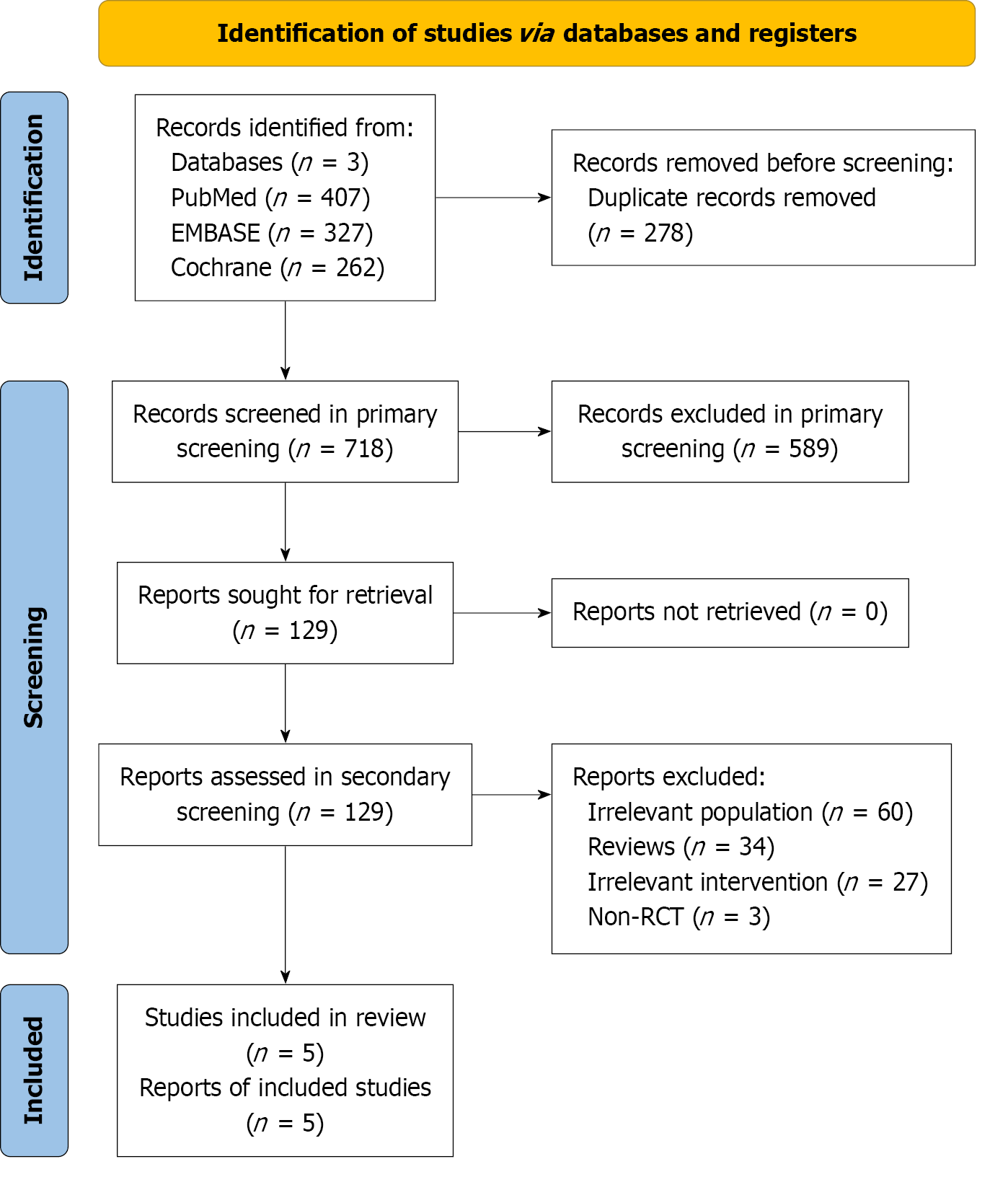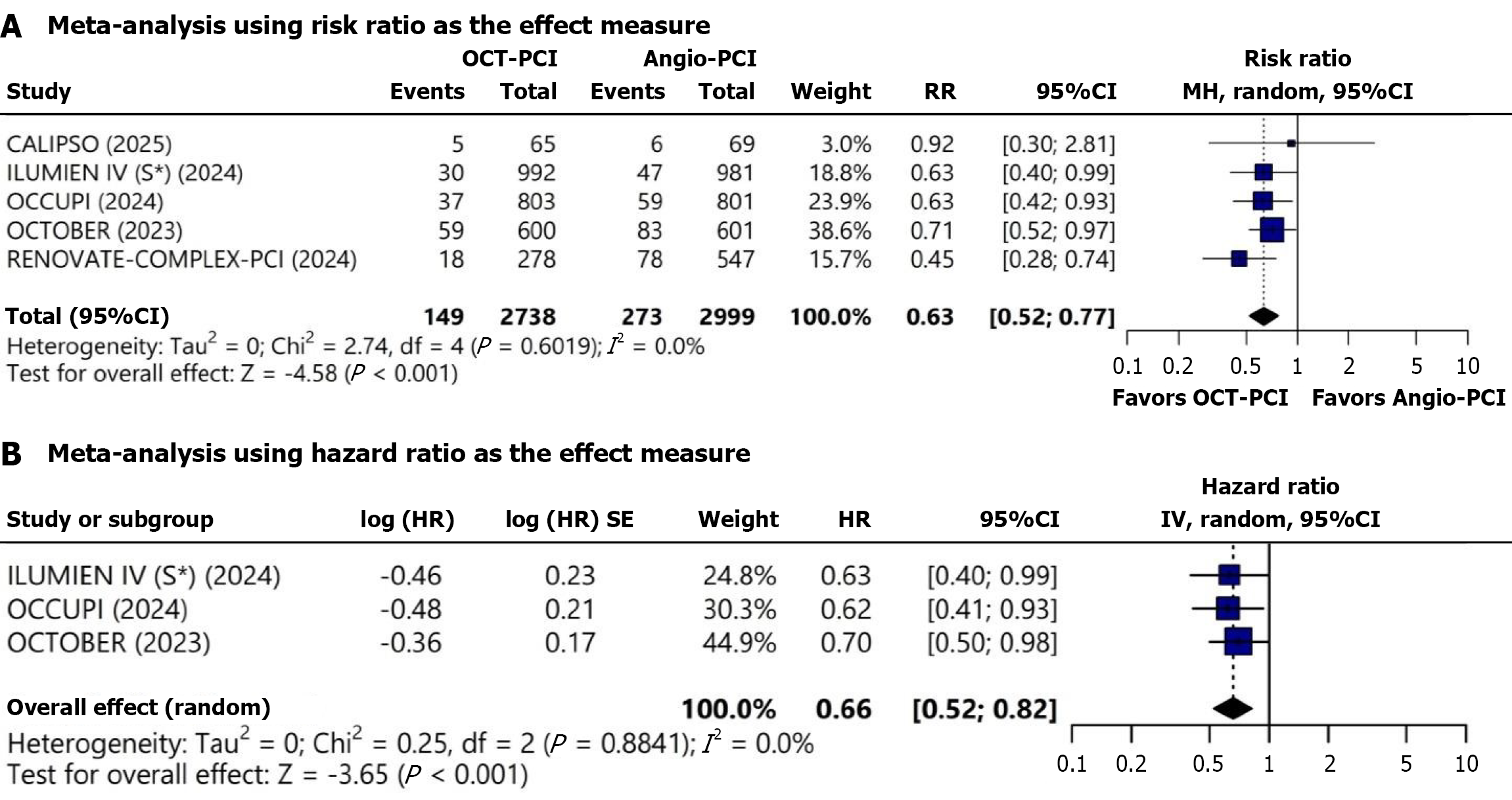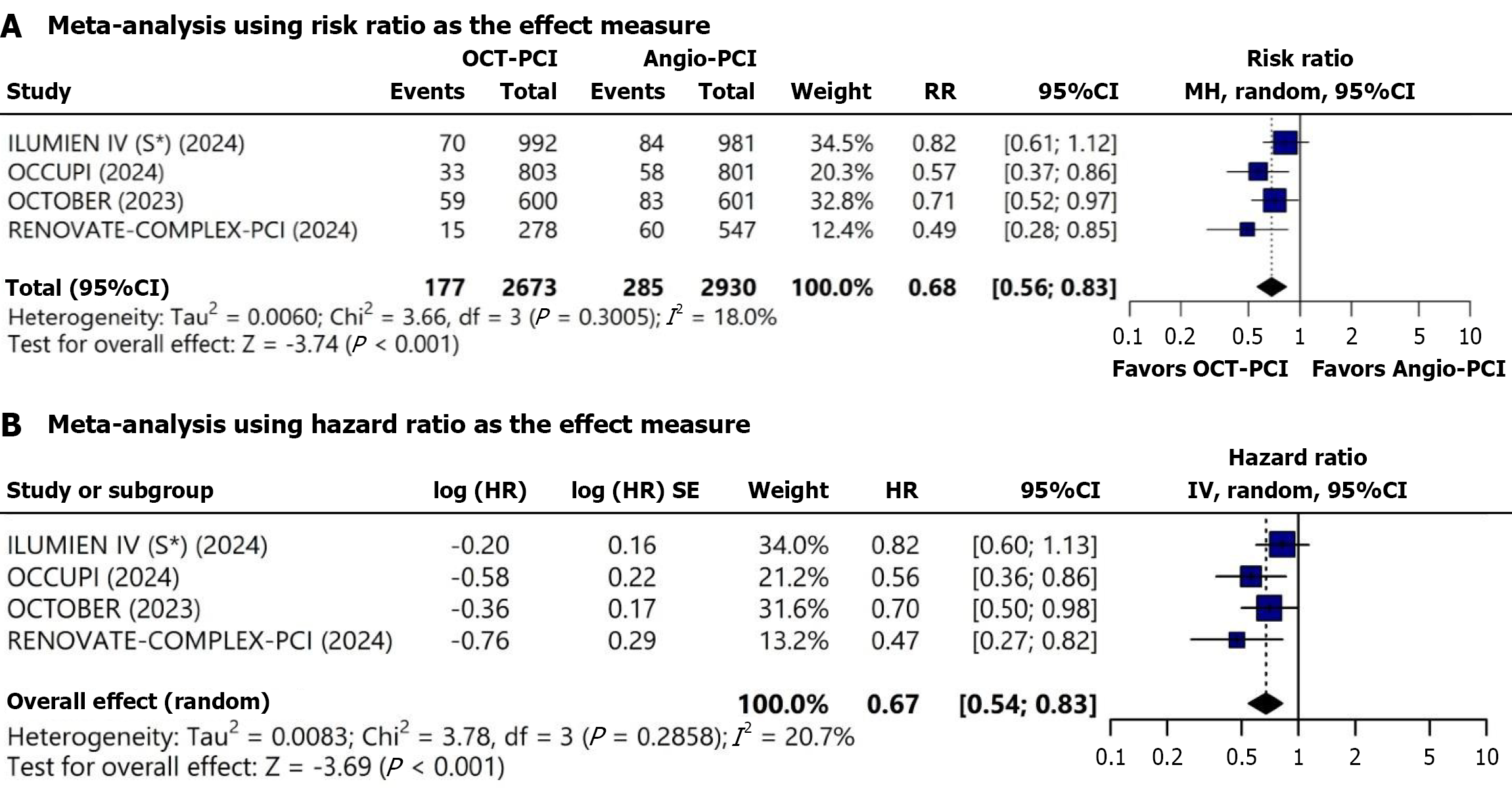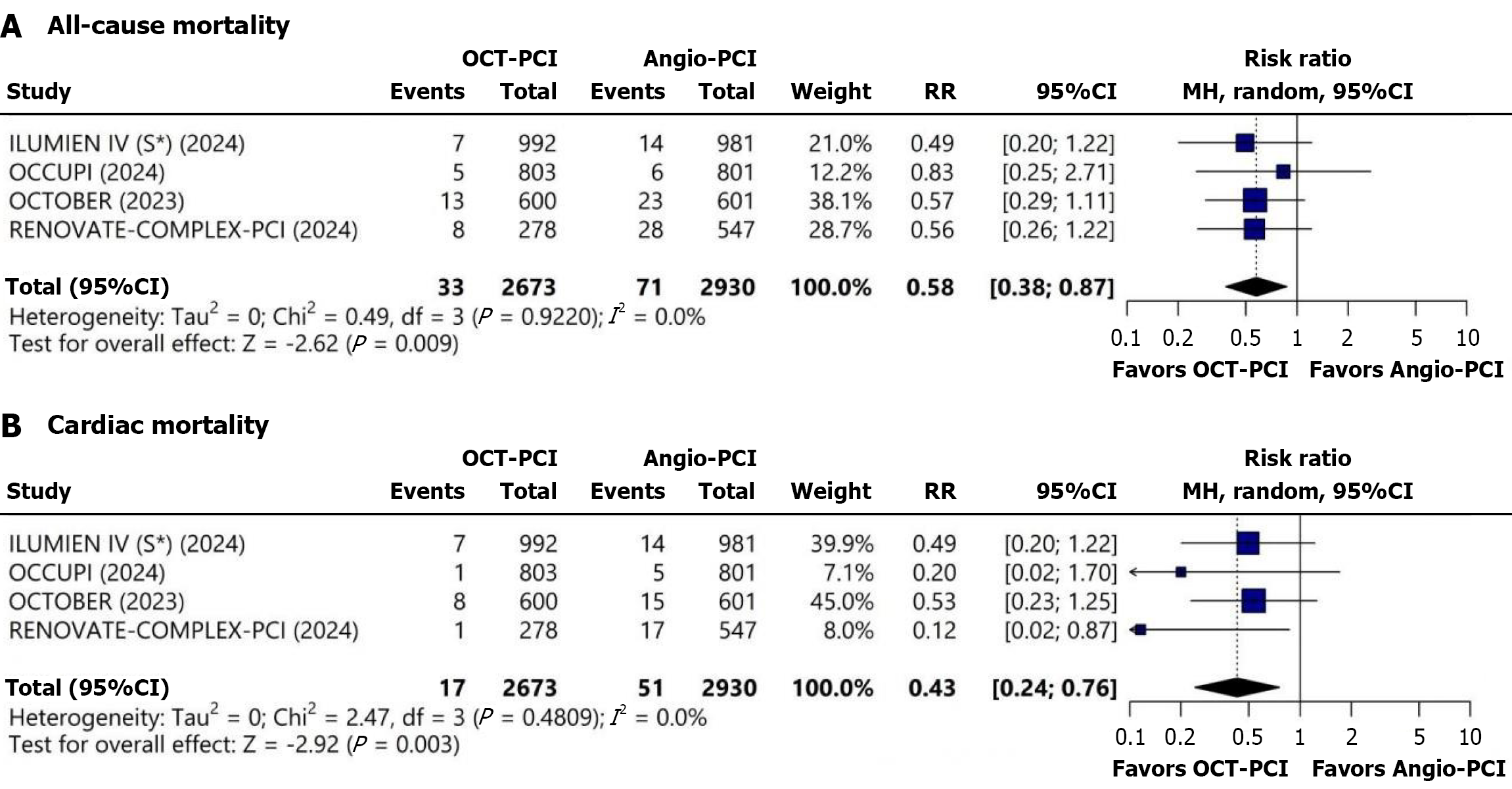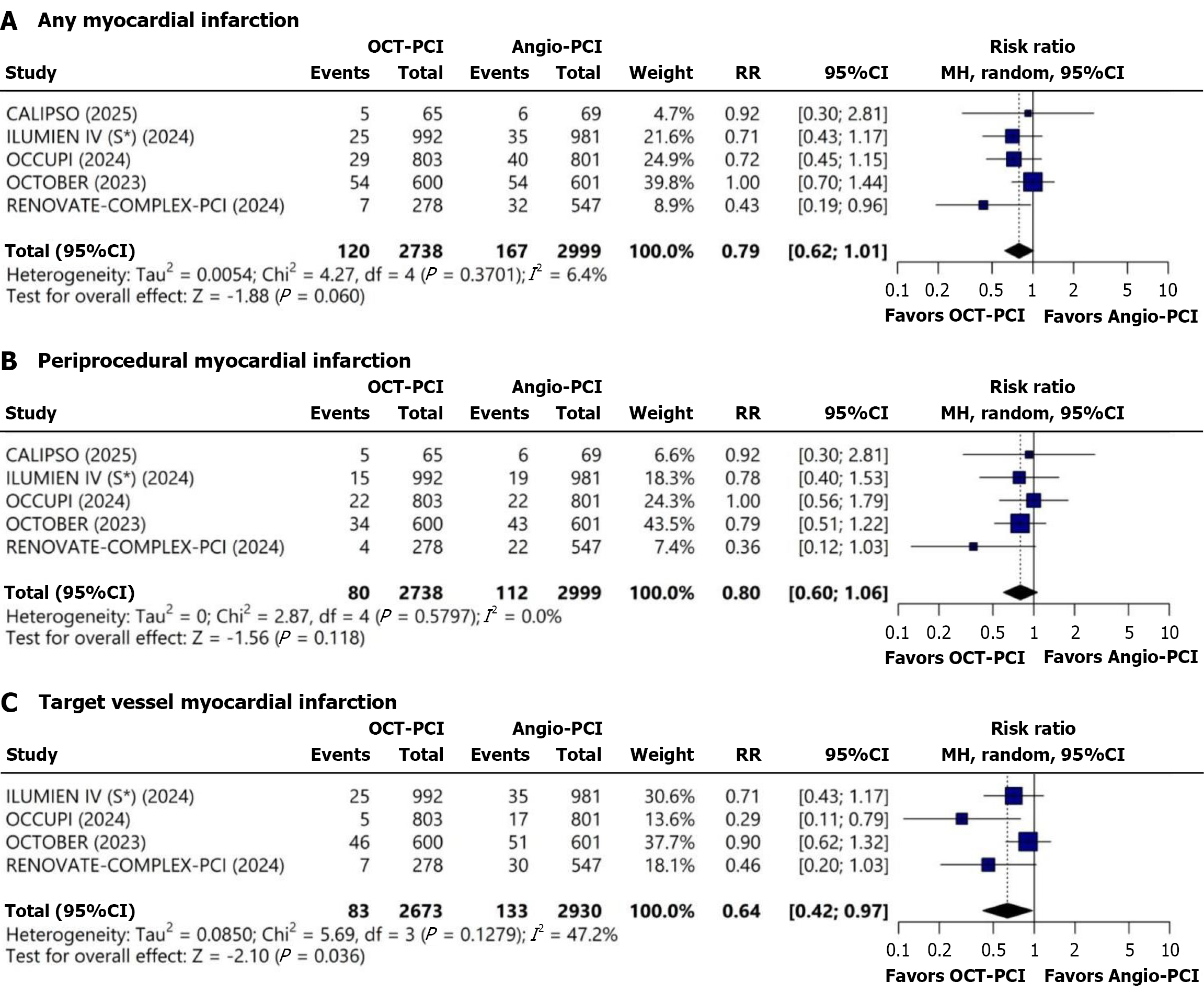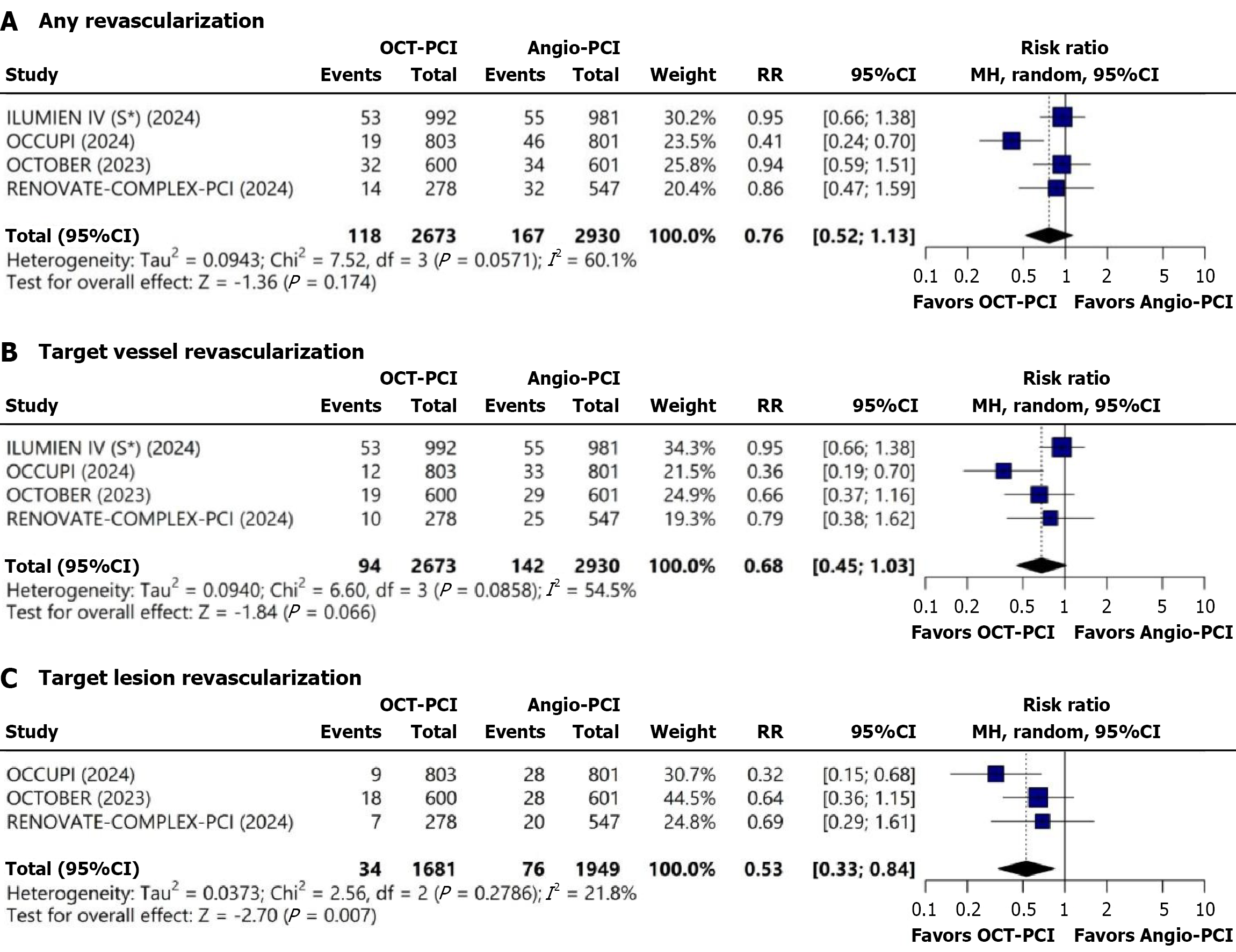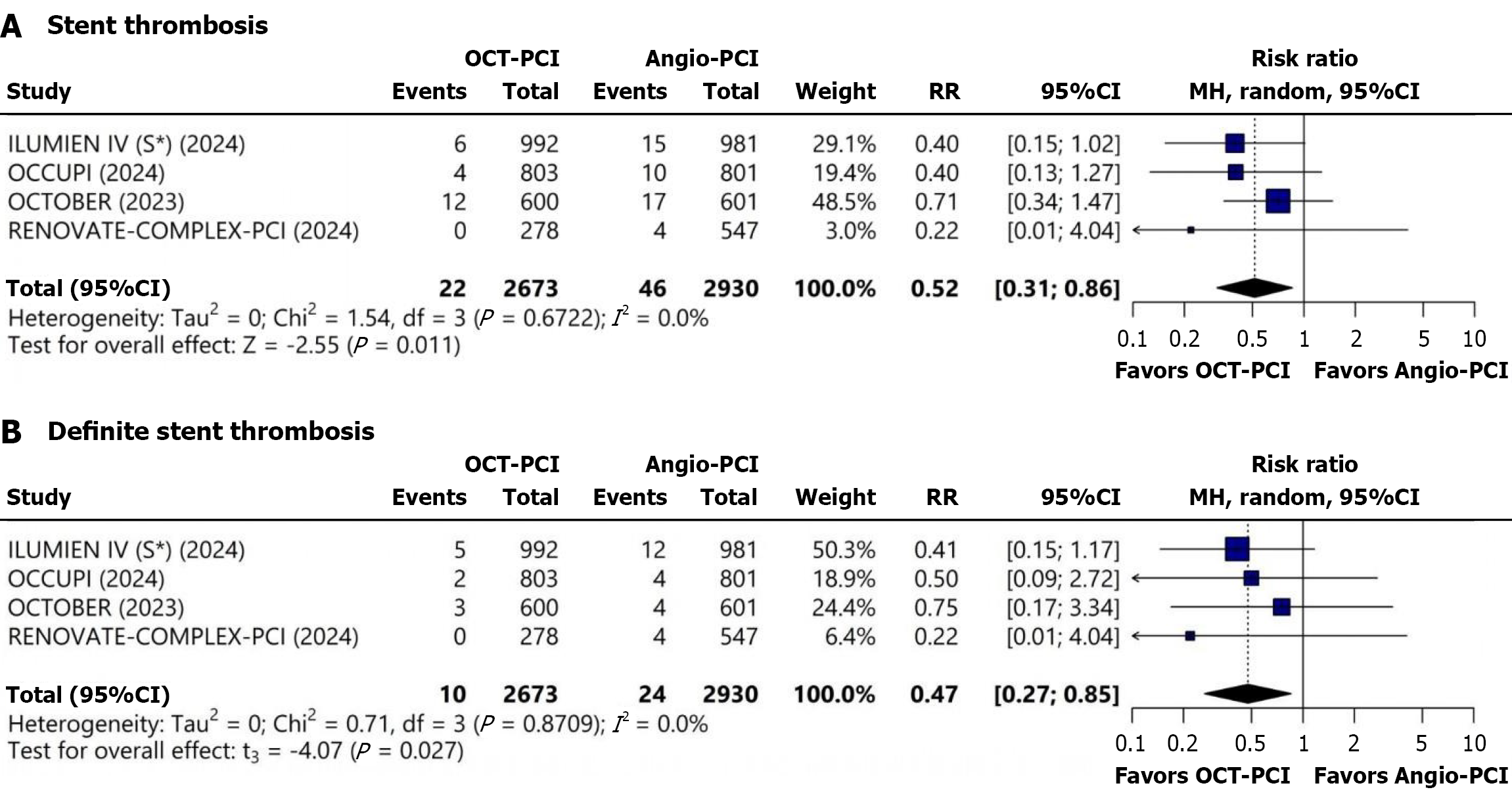Copyright
©The Author(s) 2025.
World J Cardiol. Sep 26, 2025; 17(9): 110403
Published online Sep 26, 2025. doi: 10.4330/wjc.v17.i9.110403
Published online Sep 26, 2025. doi: 10.4330/wjc.v17.i9.110403
Figure 1
Preferred Reporting Items for Systematic reviews and Meta-Analysis flow diagram for identification and selection of studies included in the meta-analysis.
Figure 2 Forest plots of studies comparing optical coherence tomography-guided percutaneous coronary intervention with angiography-guided percutaneous coronary intervention in terms of major adverse clinical events.
A: Meta-analysis using risk ratio as the effect measure; B: Meta-analysis using hazard ratio as the effect measure. HR: Hazard ratio; OCT: Optical coherence tomography; PCI: Percutaneous coronary intervention; RR: Risk ratio.
Figure 3 Forest plots of studies comparing optical coherence tomography-guided percutaneous coronary intervention with angiography-guided percutaneous coronary intervention in terms of target vessel failure.
A: Meta-analysis using risk ratio as the effect measure; B: Meta-analysis using hazard ratio as the effect measure. HR: Hazard ratio; OCT: Optical coherence tomography; PCI: Percutaneous coronary intervention; RR: Risk ratio.
Figure 4 Forest plots of studies comparing optical coherence tomography-guided percutaneous coronary intervention with angiography-guided percutaneous coronary intervention in terms of all-cause mortality and cardiac mortality.
A: All-cause mortality; B: Cardiac mortality. HR: Hazard ratio; OCT: Optical coherence tomography; PCI: Percutaneous coronary intervention; RR: Risk ratio.
Figure 5 Forest plots of studies comparing optical coherence tomography-guided percutaneous coronary intervention with angiography-guided percutaneous coronary intervention in terms of any myocardial infarction, periprocedural myocardial infarction, and target vessel myocardial infarction.
A: Any myocardial infarction; B: Periprocedural myocardial infarction; C: Target vessel myocardial infarction. HR: Hazard ratio; OCT: Optical coherence tomography; PCI: Percutaneous coronary intervention; RR: Risk ratio.
Figure 6 Forest plots of studies comparing optical coherence tomography-guided percutaneous coronary intervention with angiography-guided percutaneous coronary intervention in terms of revascularization outcomes.
A: Any revascularization; B: Target vessel revascularization; C: Target lesion revascularization. HR: Hazard ratio; OCT: Optical coherence tomography; PCI: Percutaneous coronary intervention; RR: Risk ratio.
Figure 7 Forest plots of studies comparing optical coherence tomography-guided percutaneous coronary intervention with angiography-guided percutaneous coronary intervention in terms of stent thrombosis and definite stent thrombosis.
A: Stent thrombosis; B: Definite stent thrombosis. HR: Hazard ratio; OCT: Optical coherence tomography; PCI: Percutaneous coronary intervention; RR: Risk ratio.
- Citation: Burhan M, Saeed H, Usama M, Tariq A, Shafiq S, Hurjkaliani S, Iqbal M, Shahid S, Khalid S, Tahirkheli NK. Optical coherence tomography-guided percutaneous coronary intervention compared to angiography-guided percutaneous coronary intervention for complex lesions. World J Cardiol 2025; 17(9): 110403
- URL: https://www.wjgnet.com/1949-8462/full/v17/i9/110403.htm
- DOI: https://dx.doi.org/10.4330/wjc.v17.i9.110403













